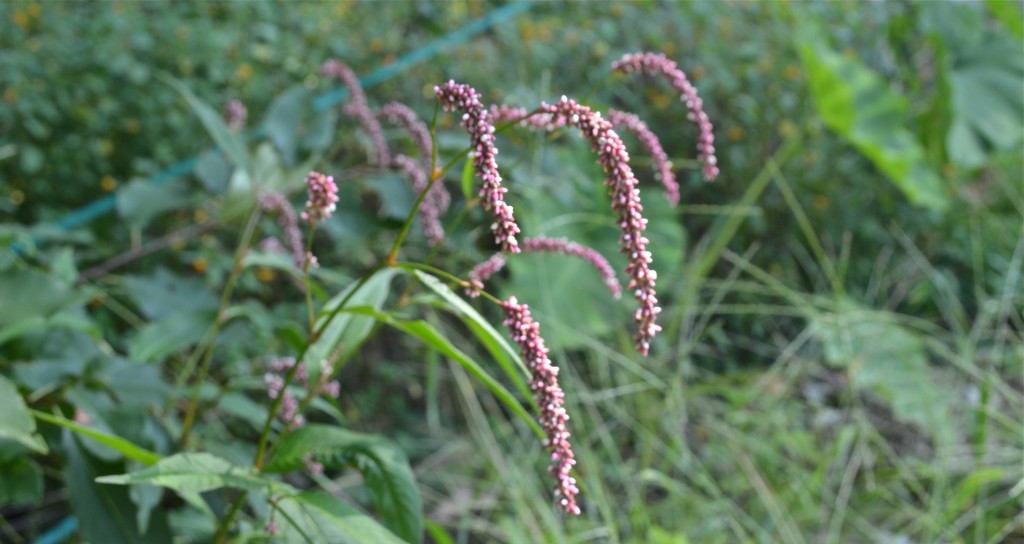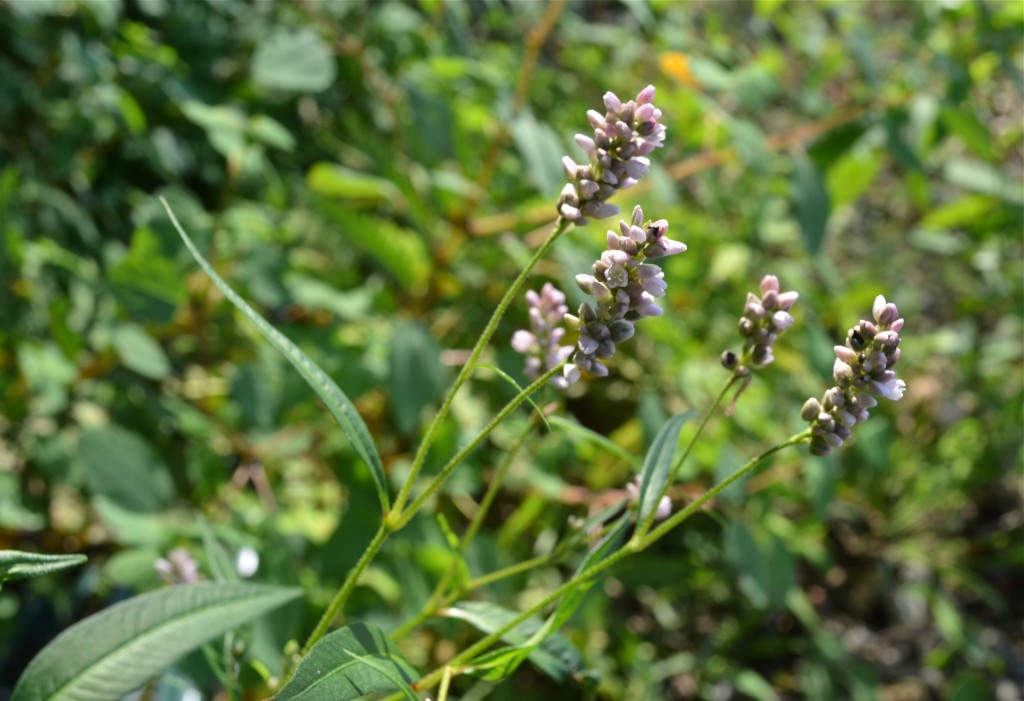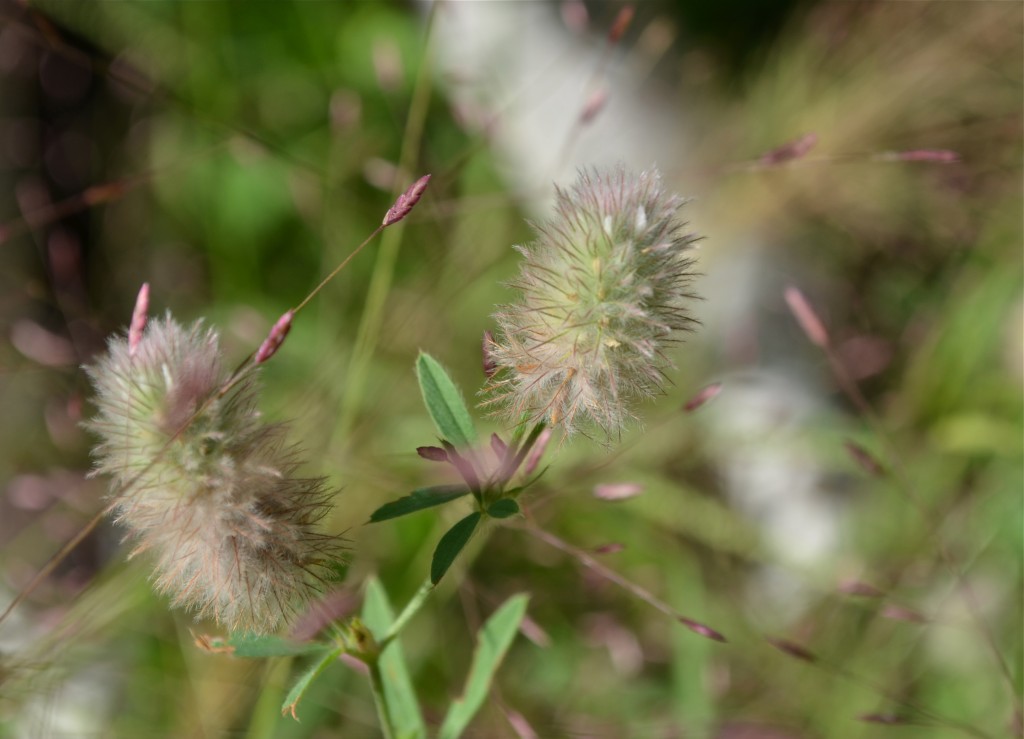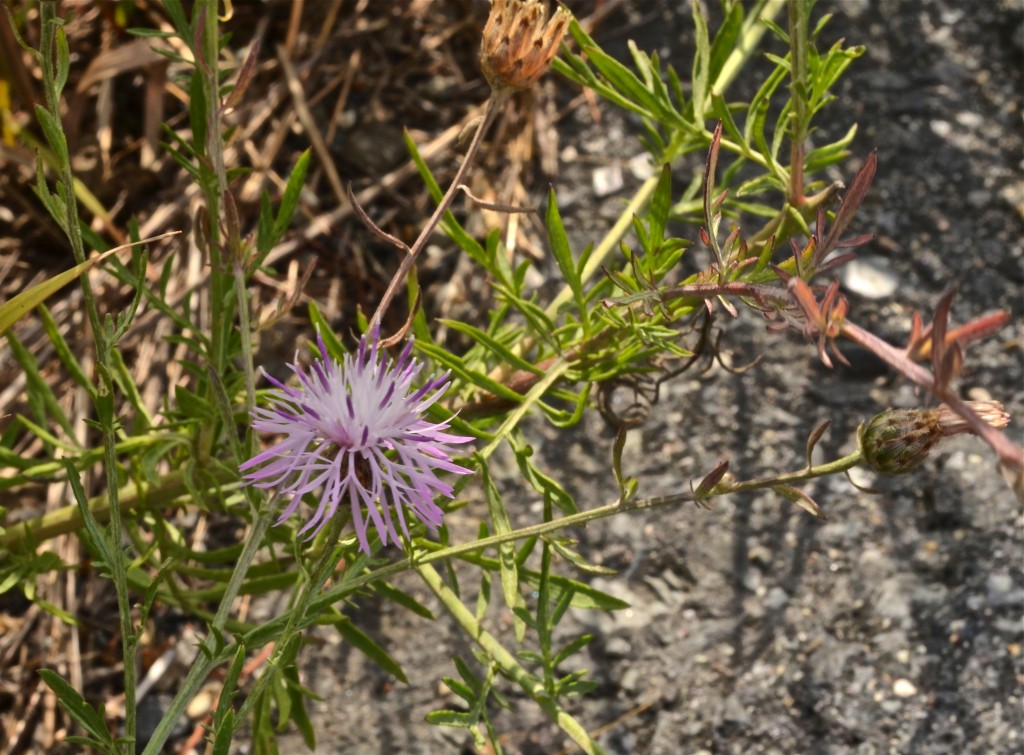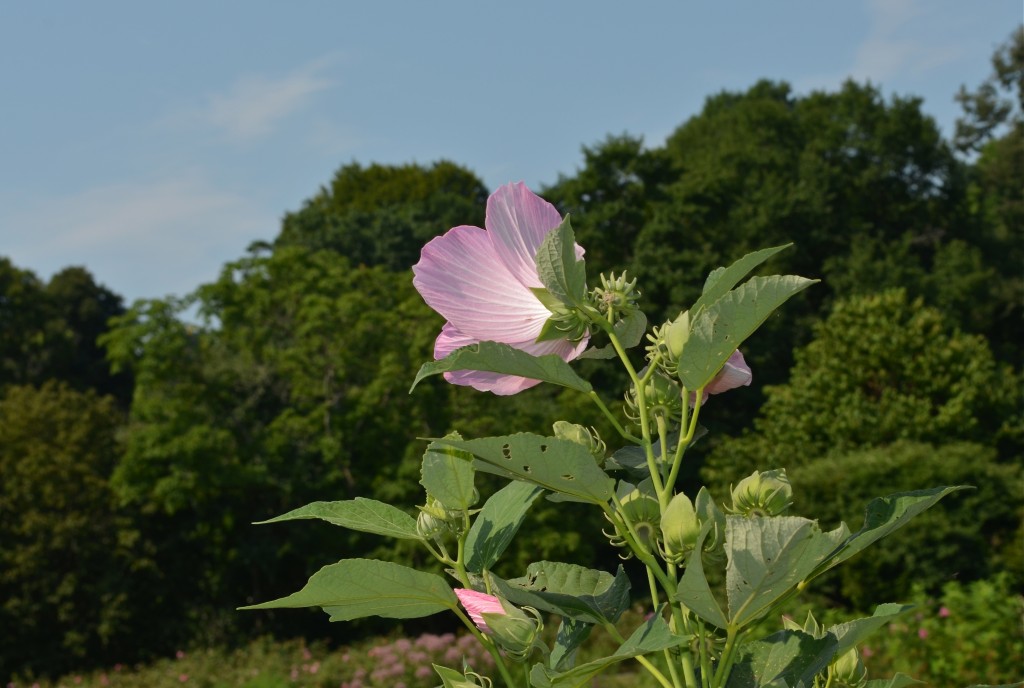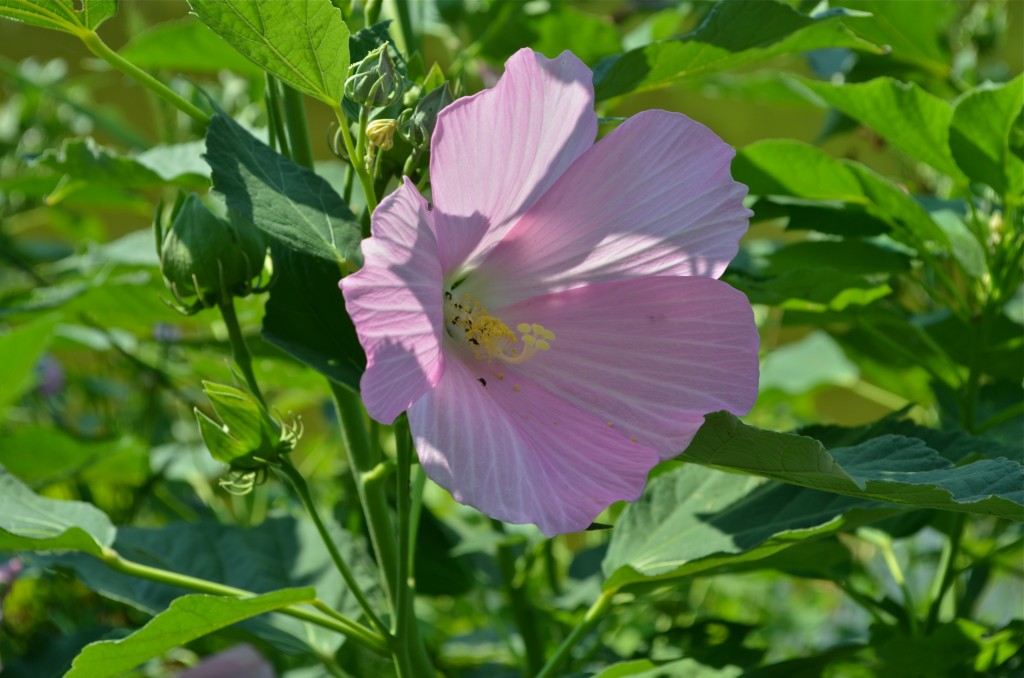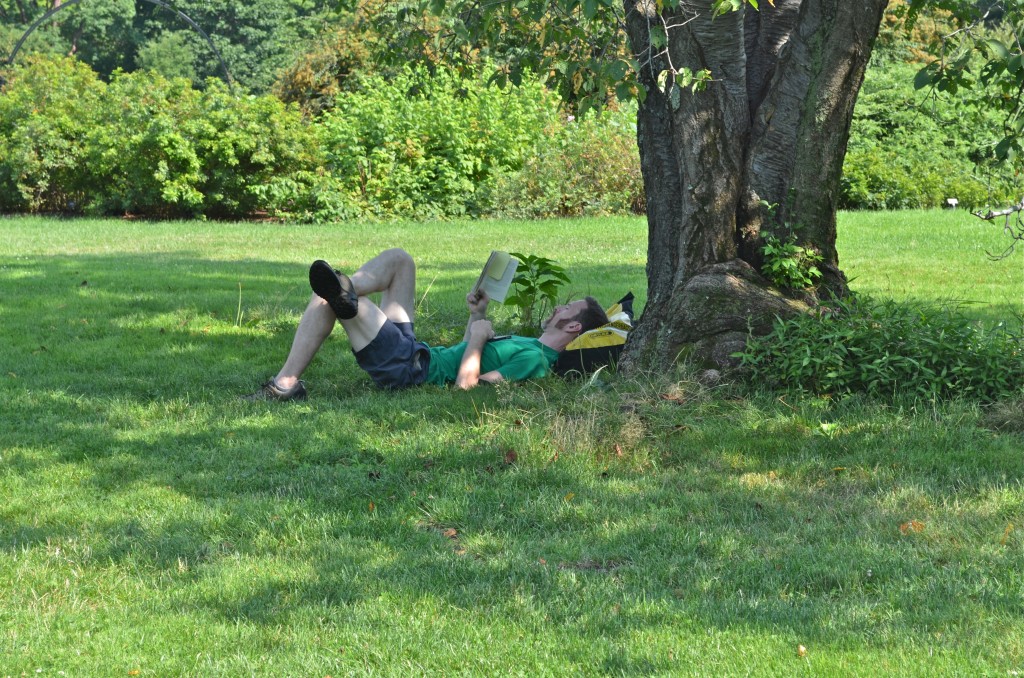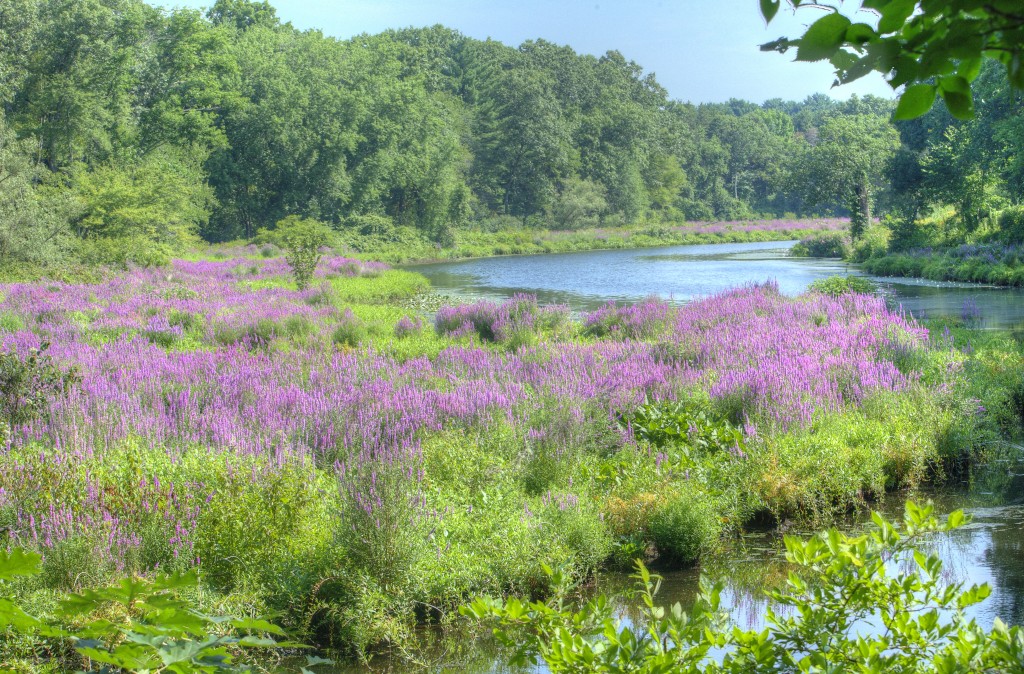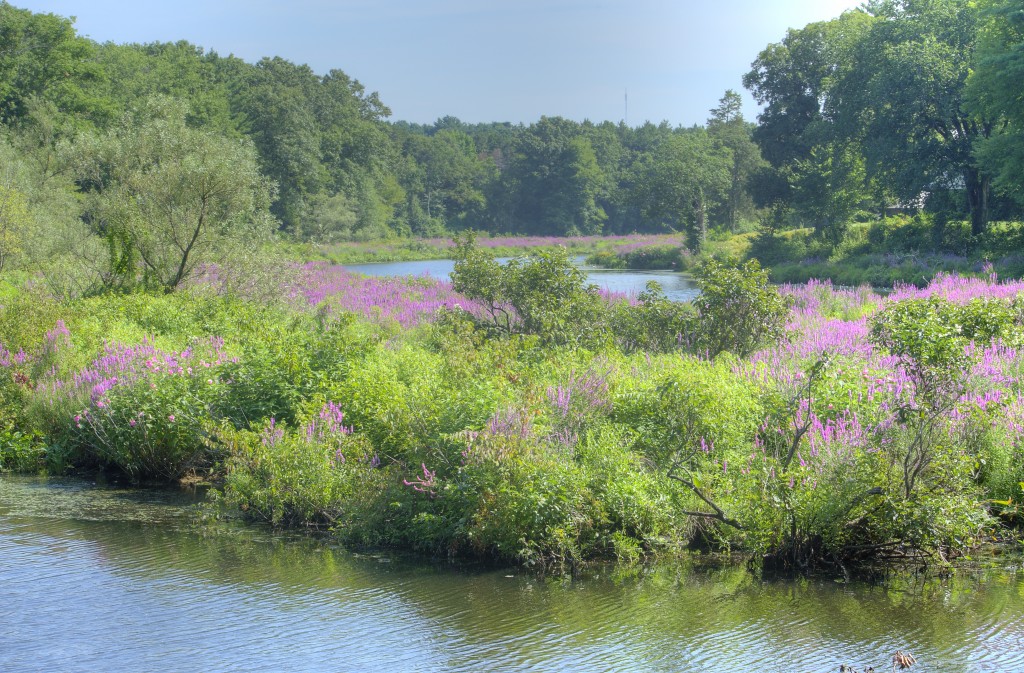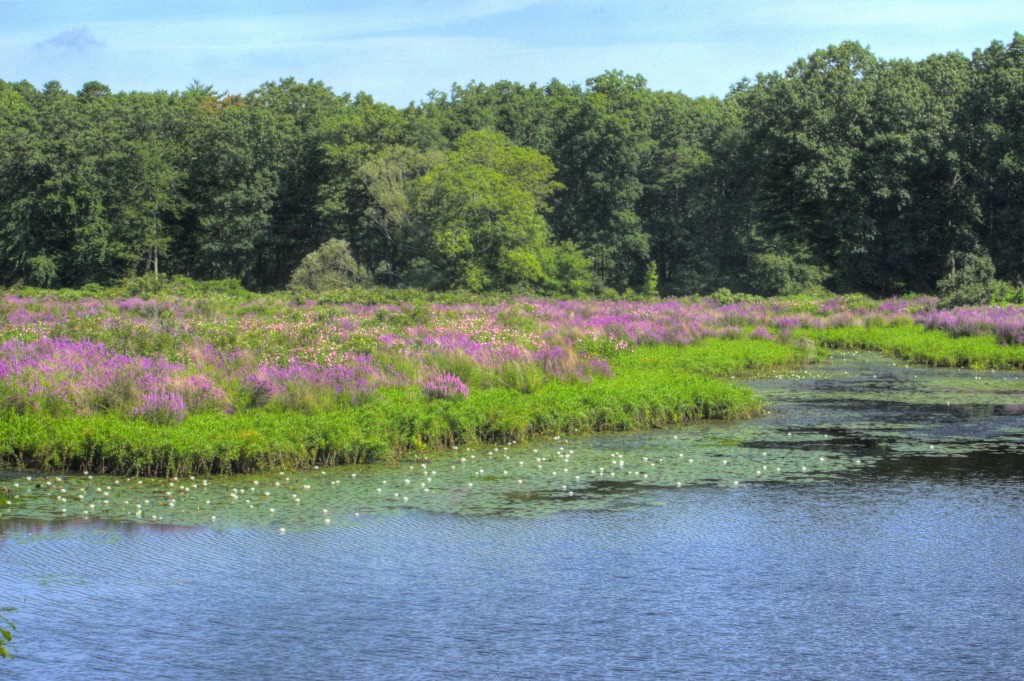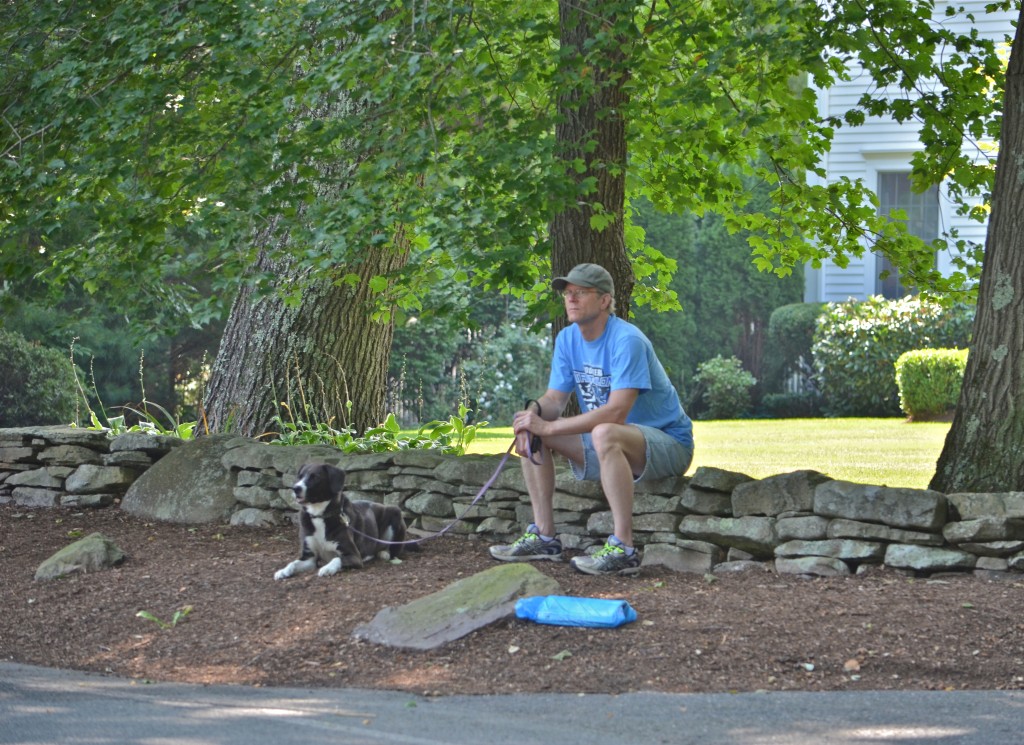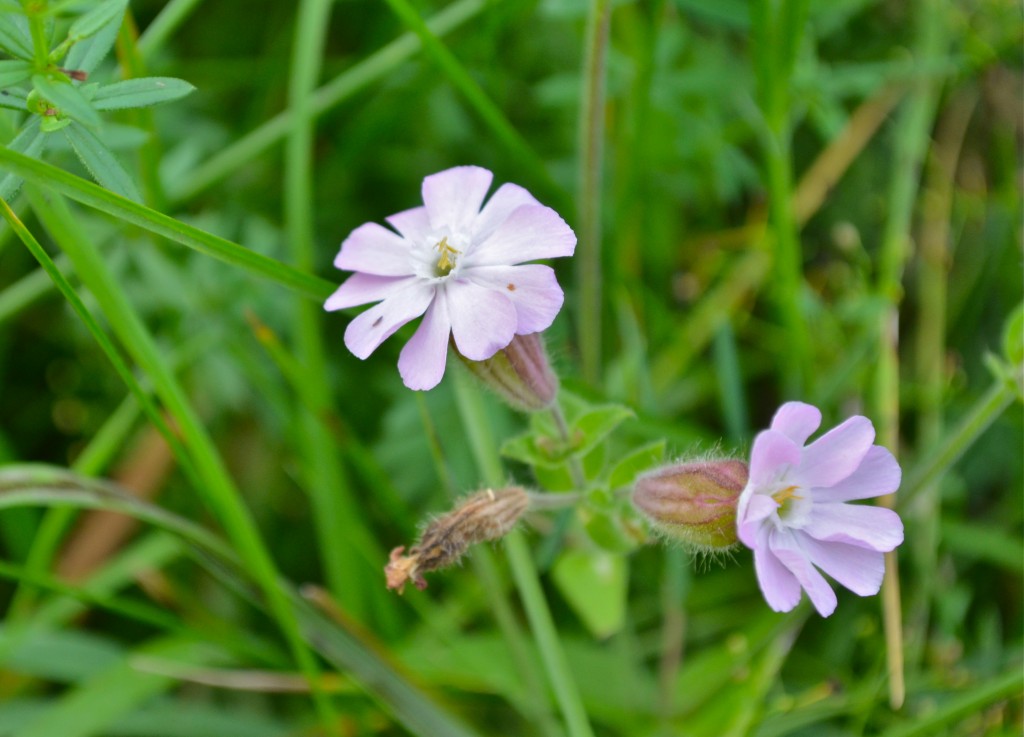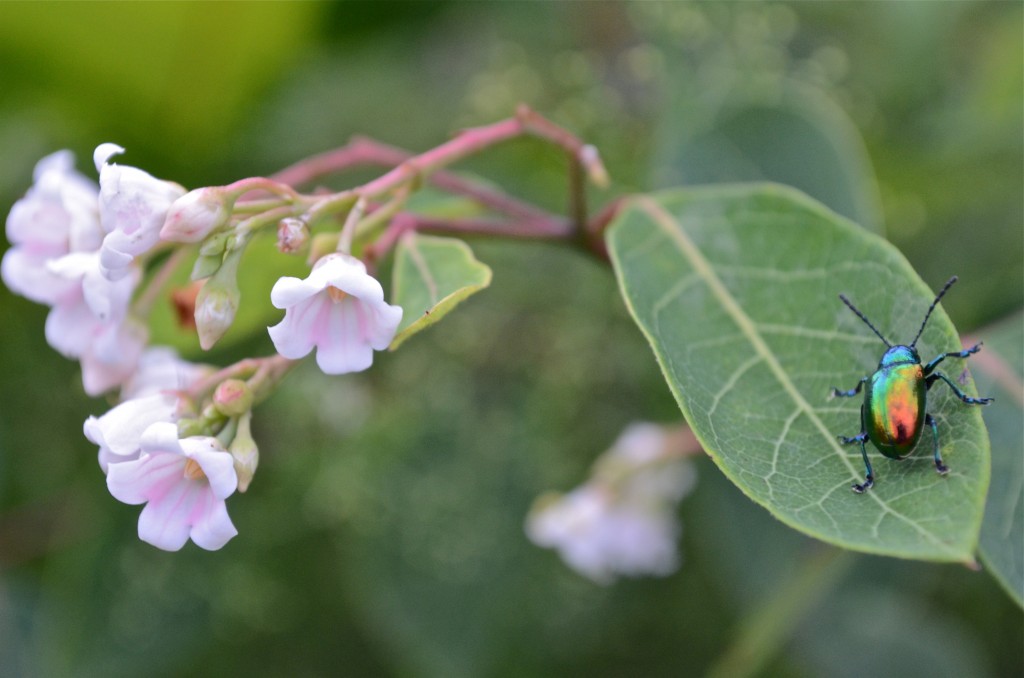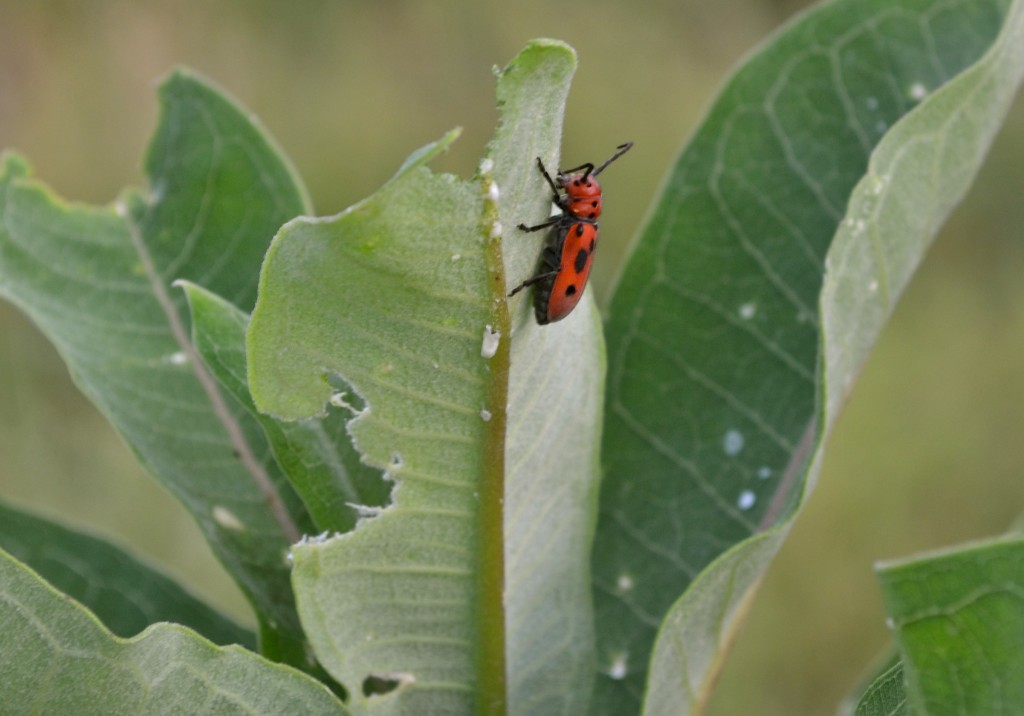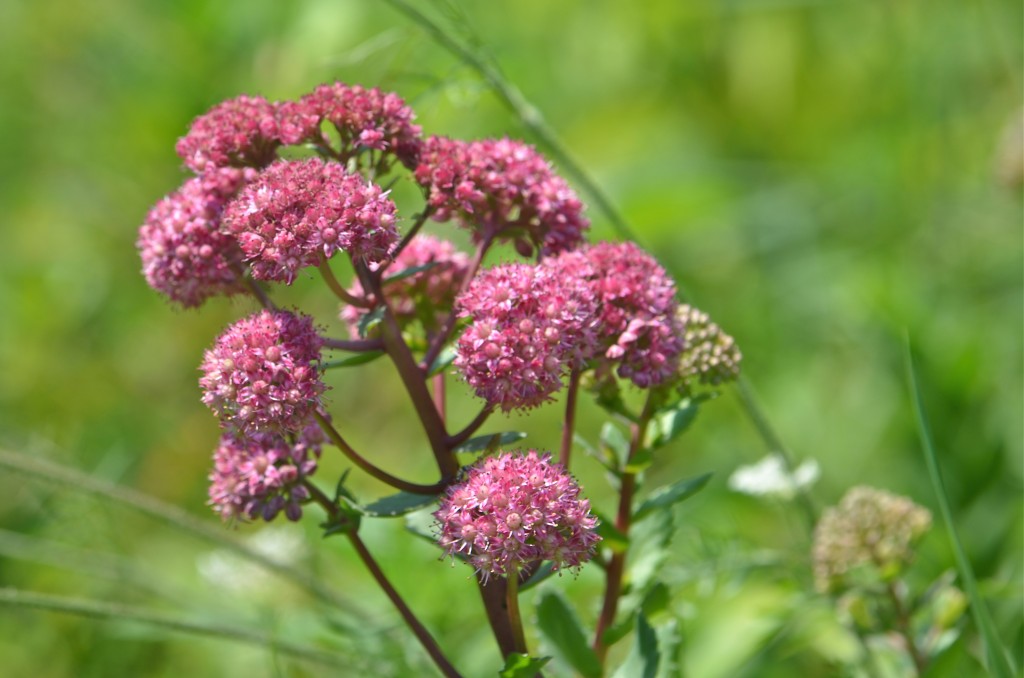
As we approach the end of summer, it was great to get this surprise– a really showy new flower. It looks a lot like purple milkweed, but has distinctive succulent leaves that are very regular and same-sized all the way up the stalks. An unusual characteristic: the leaves can be alternate or opposite. It’s named Live Forever because it’s very persistent and can grow from any small bit. We saw just a couple of plants in this whole field of other flowers– I wonder if this is the beginning of a big colony.
It has several intriguing common names that come from this: put the leaf in your mouth until it’s soft, and when the membranes are sufficiently loosened, you can inflate the leaf like a little balloon. Crassulaceae (Stonecrop) family. Native to Europe.
Live Forever, Witch’s Moneybags, Midsummer-Men, Orpine, Aaron’s Rod, Pudding-bag Plant (Sedum purpureum)
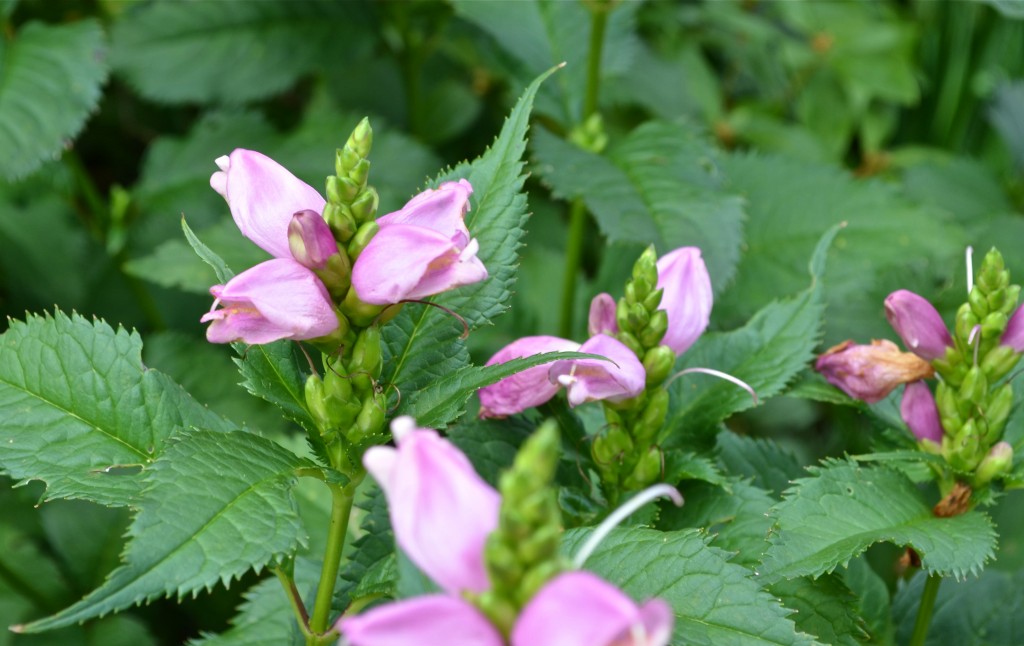 After seeing white turtlehead growing wild at Charles River Peninsula, it was easy to recognize the pink version in a garden on the Wellesley campus. It’s an unusual flower to see this late in the season; it looks like something that would be out in the spring. Bitter foliage avoided by animals. Pollinated by bumblebees. Figwort family. Native perennial.
After seeing white turtlehead growing wild at Charles River Peninsula, it was easy to recognize the pink version in a garden on the Wellesley campus. It’s an unusual flower to see this late in the season; it looks like something that would be out in the spring. Bitter foliage avoided by animals. Pollinated by bumblebees. Figwort family. Native perennial.
